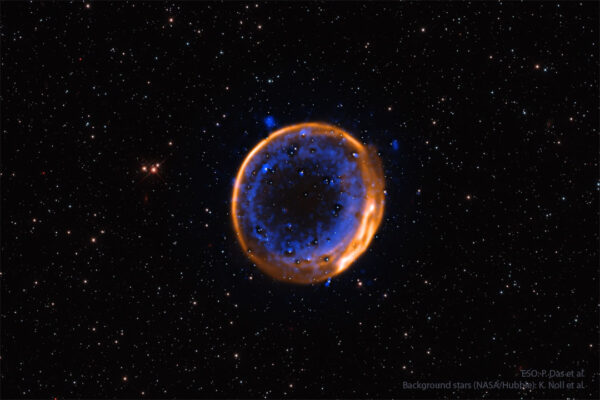Cosmo (SNR) 0509-67.5
Supernova remnant (SNR) 0509-67.5. In this two-star system, gravity causes the larger and fluffier star to give up mass to a smaller and denser white dwarf companion. Eventually the white dwarf‘s near-surface temperature goes so high that it explodes, creating a shock wave that goes both out and in — and so triggers a full Type Ia supernova near the center. Recent images of the SNR 0509-67.5 system, like the featured image from the Very Large Telescope in Chile, show two shells with radii and compositions consistent with the double detonation hypothesis. This system, SNR 0509-67.5 is also famous for two standing mysteries: why its bright supernovawasn’t noted 400 years ago, and why no visible companion star remains. This image, taken with ESO’s Very Large Telescope (VLT), shows the supernova remnant SNR 0509-67.5. These are the expanding remains of a star that exploded hundreds of years ago in a double-detonation – the first photographic evidence that stars can die with two blasts. The data were captured with the Multi-Unit Spectroscopic Explorer (MUSE) instrument at the VLT. MUSE allows astronomers to map the distribution of different chemical elements, displayed here in different colours. Calcium is shown in blue, and it is arranged in two concentric shells. These two layers indicate that the now-dead star exploded with a double-detonation. Hydrogen (H alpha) is shown in orange.
